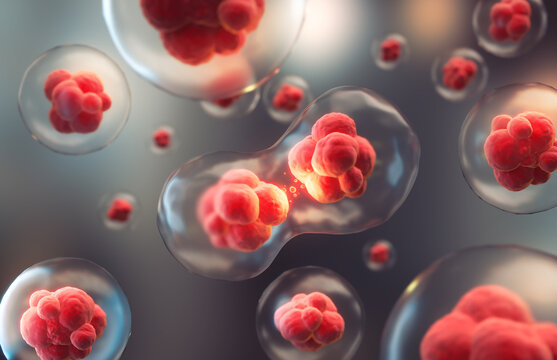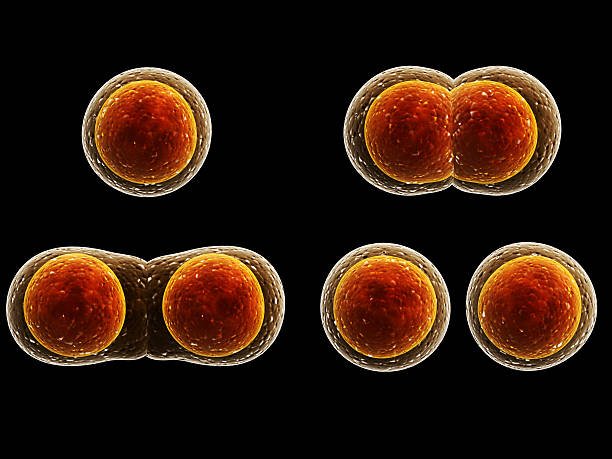
Bacterial Cell Division Uncovered.
Bacterial cell division is one of the most fundamental biological processes, yet it remains one of the most fascinating. These microscopic organisms have developed highly efficient and robust mechanisms to ensure survival, reproduction, and adaptation in diverse environments. Understanding how bacteria divide sheds light on basic biological principles and has significant implications for medicine, biotechnology, and environmental science. Bacterial Cell Division Uncovered—discover key proteins, lipids, and mechanisms driving precise bacterial replication.
Bacterial Cell Division Uncovered.

Bacteria, as single-celled organisms, primarily reproduce through a process called binary fission. In binary fission, a single bacterial cell divides into two identical daughter cells. This process is remarkably fast; under optimal conditions, some bacteria can divide every 20 minutes. Such rapid division allows bacterial populations to grow exponentially, which is why infections can spread so quickly and why bacterial adaptation to new environments can happen rapidly.
The process of binary fission involves several key steps:
Replication of DNA: Before division, the bacterium must replicate its chromosome, which is typically a single circular DNA molecule. This ensures that each daughter cell receives an identical copy of the genetic material.
Elongation of the Cell: After DNA replication, the cell elongates. This elongation helps to separate the two copies of the chromosome to opposite ends of the cell.
Formation of the Septum: A critical step in cell division is the formation of the septum, a structure that forms between the two sets of genetic material. The septum will eventually become the dividing line between the two new cells.
Cytokinesis: In the final step, cytokinesis, the cell membrane pinches inward, dividing the cell into two separate, identical daughter cells.
The Molecular Machinery Behind Cell Division.

At the heart of bacterial cell division is a complex machinery of proteins working in coordination. The FtsZ protein, a tubulin-like component, plays a crucial role in forming the septum.
FtsZ forms a ring at the future site of division, known as the Z-ring. This ring serves as a scaffold for other proteins involved in cell division, such as FtsA, ZipA, and several others. The Z-ring contracts as the division progresses. It guides the formation of the septum and ultimately leads to the separation of the two daughter cells.
The assembly and contraction of the Z-ring are tightly regulated processes. The spatial and temporal regulation of FtsZ is critical to ensure that division occurs at the right time and place. Proteins such as MinC, MinD, and MinE help position the Z-ring at the cell’s midpoint. This positioning prevents incorrect division and ensures the daughter cells are equal.
In addition to FtsZ, other proteins like DivIVA and MreB contribute to cell division. MreB, for example, determines the rod shape of many bacteria and coordinates cell wall synthesis during elongation and division.
Bacterial Cell Division Uncovered: Challenges.

Bacteria often find themselves in challenging environments, where resources are scarce, or conditions are harsh. These conditions can affect cell division, leading to unique adaptations.
For example, some bacteria can form spores when they encounter unfavorable conditions. Sporulation involves a highly specialized form of cell division where one of the daughter cells becomes a dormant, resistant spore. The spore can survive extreme conditions, and when the environment becomes favorable again, it can germinate and return to a vegetative state.
Other bacteria have evolved mechanisms to delay or halt cell division under stress. This is seen in bacteria that enter a stationary phase due to nutrient isn’t a limitation. During this phase, bacteria stop dividing and instead focus on survival, reducing their metabolic activity and conserving energy. This ability to pause cell division is critical for survival in fluctuating environments, allowing bacteria to endure until conditions improve.
Bacterial Cell Division and Antibiotic Resistance.

One of the most pressing concerns in modern medicine is the rise of antibiotic-resistant bacteria. Understanding bacterial cell division is crucial in the fight against these resistant strains. Many antibiotics, such as penicillin, target the bacterial cell wall, which is intimately connected to cell division. By inhibiting cell wall synthesis, these antibiotics prevent bacteria from successfully dividing, leading to their death.
However, bacteria have evolved various mechanisms to resist these antibiotics. Some bacteria produce enzymes like β-lactamases that degrade antibiotics before they can affect cell division. Others may alter the structure of their cell wall or develop efflux pumps to remove the antibiotic from the cell. These adaptations highlight the ongoing arms race between bacterial evolution and antibiotic development.
Researchers are now focusing on targeting the proteins involved in bacterial cell division as a new approach to combating antibiotic resistance. For instance, inhibitors of FtsZ have shown promise as potential antibiotics. By preventing the formation of the Z-ring, these inhibitors can disrupt cell division, offering a novel way to kill bacteria that are resistant to traditional antibiotics.
The Role of Bacterial Cell Division in Biotechnology.

Beyond its medical implications, bacterial cell division is also of great interest in biotechnology. Bacteria are widely used in industrial processes, including the production of enzymes, pharmaceuticals, and biofuels. By understanding and manipulating the cell division process, scientists can optimize bacterial growth and productivity.
One application of this knowledge is in the field of synthetic biology, where bacteria are engineered to perform specific tasks. For example, by controlling the timing and rate of cell division, scientists can create bacterial strains that produce higher yields of desired products. Additionally, understanding cell division can help in the development of biosensors, where bacteria are engineered to detect and respond to environmental changes.
Future Directions in Bacterial Cell Division Research.

The study of bacterial cell division is an ever-evolving field, with discoveries continually reshaping our understanding. Recent advances in microscopy and molecular biology have provided unprecedented insights into the dynamics of cell division at the single-cell level.
One exciting area of research is the investigation of asymmetric cell division in bacteria. While binary fission typically produces two identical daughter cells, some bacteria can undergo asymmetric division, resulting in daughter cells with different sizes, shapes, or functions. This process is crucial in the development of certain bacterial species and may play a role in bacterial differentiation and the formation of complex multicellular structures.
Another promising direction is the exploration of the bacterial cytoskeleton and its role in cell division. Once thought to be exclusive to eukaryotic cells, cytoskeletal elements like MreB and FtsZ are now recognized as key players in bacterial cell division. Understanding how these proteins interact and coordinate with other cellular processes could reveal new targets for antibiotics and deepen our understanding of bacterial cell biology.
Bacterial cell division is a marvel of biological engineering, showcasing the efficiency and adaptability of life at its smallest scale. From the replication of DNA to the formation of the septum and the final separation of daughter cells, each step is a finely tuned process that ensures the survival and propagation of bacterial species.
As we continue to uncover the secrets of bacterial cell division, we open new avenues for innovation in medicine, biotechnology, and environmental science. Whether it’s developing new antibiotics, engineering bacteria for industrial use, or simply understanding the basic principles of life, the study of bacterial cell division will remain a cornerstone of biological research for years to come.
Understanding these microscopic processes not only satisfies our curiosity about the fundamental mechanisms of life but also equips us with the knowledge to address some of the most significant challenges facing humanity today. From antibiotic resistance to biotechnological advancements, the implications of bacterial cell division research are vast and far-reaching, promising a future where we can harness the power of bacteria for the greater good.







